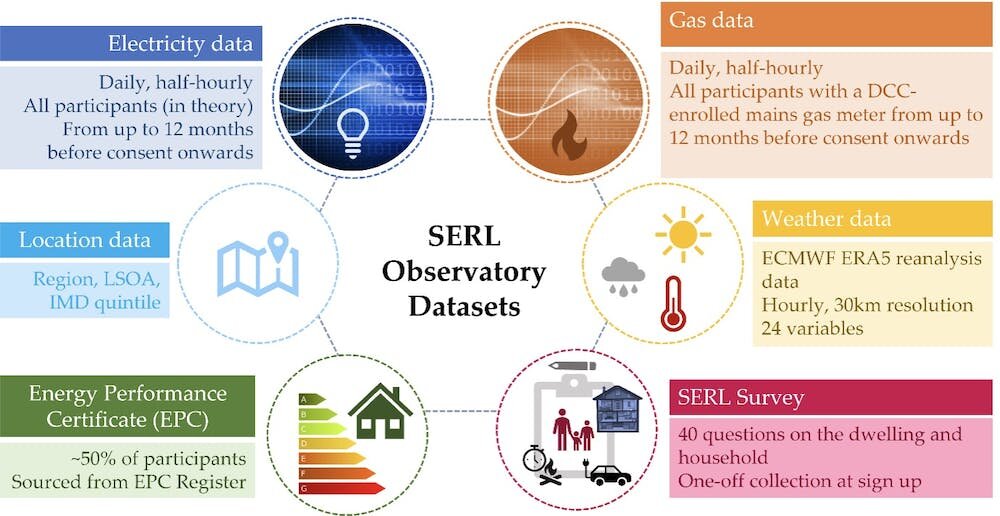How much money does turning down the thermostat actually save?

The unprecedented rise in energy costs this winter has many people asking how to reduce their bills. In a typical UK home, around 80% of the total energy used in a year goes towards heating space and water, so any change in heating makes a big difference.
The most common advice is to reduce your thermostat temperature. Worryingly (because of climate change) and fortunately (because of the cost of living crisis), the autumn so far has been extremely mild. But temperatures are now beginning to drop. Colleagues and I have therefore looked into our data on home energy use to see how much energy is typically used at different thermostat temperatures.
The media has already reported some estimations of cost savings associated with changing thermostat temperature. But these are generally based on theoretical savings using energy models, and their calculations rely on many assumptions about how the home is used.
Instead, we looked at how much energy was actually used in 2021 in homes with thermostats set to different temperatures. (Temperatures in 2021 were close to the 30-year average.)
We then calculated how much this would cost using the current price cap for an average customer. The government’s Energy Price Guarantee limits prices to £0.34 per kilowatt-hour for electricity, £0.103/kWh for gas, and standing charges of £0.46/day for electricity and £0.28/day for gas.
To find the representative energy usage, we used data from the SERL Observatory. This is a project involving a representative sample of 13,000 homes in Britain who have allowed us to access their smart meter readings and other contextual data for research for the public good (and to whom we are extremely grateful). For this analysis, we chose a subset of homes with gas central heating who answered a question in our survey asking what temperature their thermostat was set to during the winter.
We found that for each 1℃ decrease in thermostat temperature between 22℃ and 18℃, an average home used around £130 less energy. That is based on the October 2022 price cap and a typically sized house (85m² floor area—the median in our sample and close to the national average).
Bigger homes stand to make greater savings from lower thermostat set points in absolute terms, though the relative savings will be fairly similar. For every square meter, on average households in our sample used around £1.10 less gas for each 1℃ decrease. They also used 40p less electricity for each 1℃ and each square meter.
The interaction between electricity and gas use in homes is complicated, but this electricity reduction is likely partly because boilers use electrical pumps to move water around the house and electrical fans to direct CO₂ and steam (released when gas is burned) outside of the house. It’s also partly because homes that have higher thermostat temperatures are more likely to be wealthier and have more electrical appliances.
Your mileage may vary
It’s important to note that this does not necessarily mean your home would save this amount. Importantly, our data is observational: we can see the difference between groups of homes with different thermostat temperatures. We don’t directly see from our data what happens when people change their thermostat setting. This might be a bit different and will depend on the configuration and control of the heating system.

Important factors that will contribute to the amount of energy saved by reducing the thermostat temperature include:
-
how big your home is (bigger homes would save more, and smaller homes save less)
-
how quickly your home loses heat
-
how many hours your heating is switched on for
-
how mild or cold the winter is
-
the tariff you have for your energy bills (some people may still be on previous tariffs).
Finally, remember that dropping the temperature below 18℃ could impact your health so it is not recommended, especially if you are at all vulnerable.
For those who want to experiment with dropping the thermostat a degree or two—within a safe range—this could lead to significant savings. This not only helps your finances, but also the whole country (by reducing government spending to fund the Energy Price Guarantee, and helping to reduce overall gas demand, as well as reducing carbon emissions).
This article is republished from The Conversation under a Creative Commons license. Read the original article.![]()
Citation:
How much money does turning down the thermostat actually save? (2022, December 2)
retrieved 2 December 2022
from https://techxplore.com/news/2022-12-money-thermostat.html
This document is subject to copyright. Apart from any fair dealing for the purpose of private study or research, no
part may be reproduced without the written permission. The content is provided for information purposes only.
For all the latest Technology News Click Here
For the latest news and updates, follow us on Google News.

